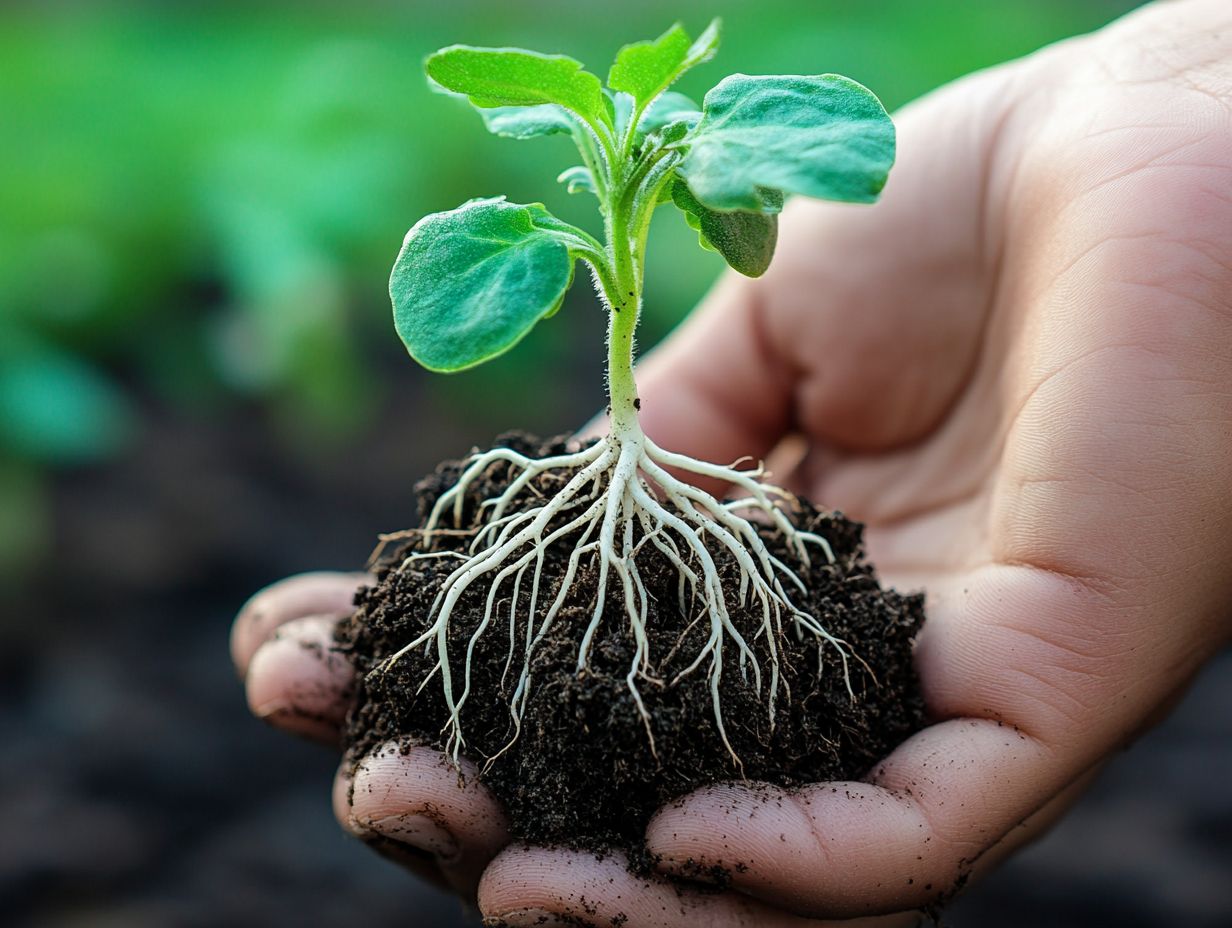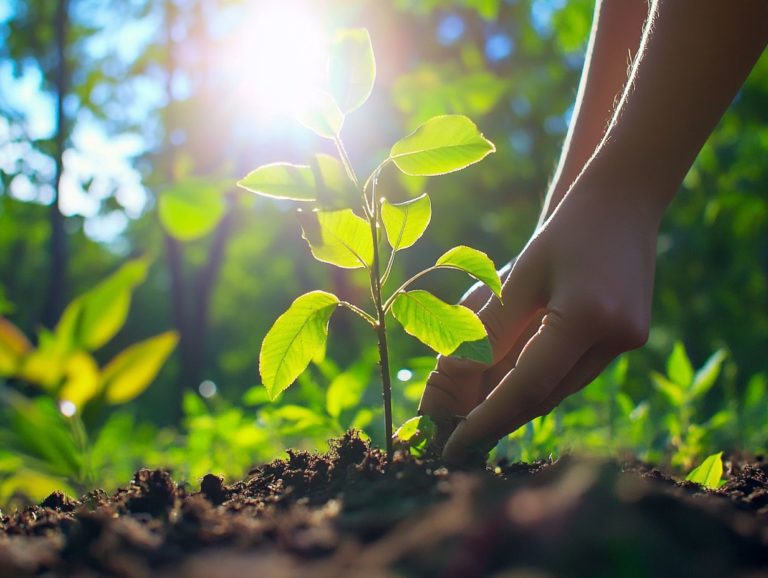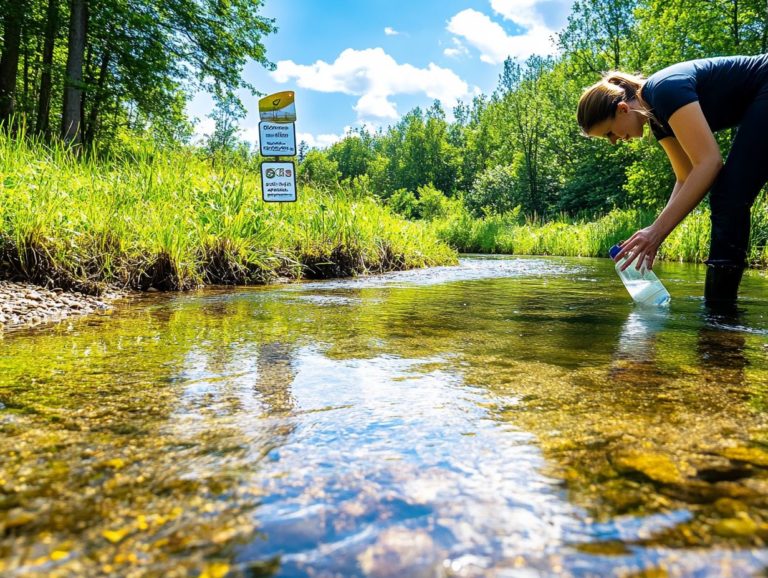Are There Certifications for Green Accommodations?
Root development is a crucial aspect of successful plant propagation, serving as the foundation for overall growth and health. This is especially important when considering various cutting methods, such as stem cutting and leaf cutting.
Understanding how roots function empowers you as a gardener or horticulturist to nurture stronger, more vibrant plants.
Let s explore the exciting world of root development and discover how to make your plants thrive! This article provides valuable insights into visual cues and techniques for assessment, including how to assess roots in potted plants.
It discusses environmental factors that influence growth, shares best practices for promoting robust roots, and identifies common issues you may encounter along the way.
Contents
- Key Takeaways:
- The Importance of Root Development in Propagated Plants
- Signs of Root Development in Propagated Plants
- Methods for Checking Root Development
- Factors Affecting Root Development
- Promoting Root Development in Propagated Plants
- Common Problems with Root Development in Propagated Plants
- Frequently Asked Questions
- What is root development and root growth, and why is it important in propagated plants, including tomatoes, peppers, and cucumbers?
- How can I check for root development in my propagated plants?
- Using a root development hormone can speed up the process?
- How long does it usually take for roots to develop in propagated plants?
- What should I do if I don’t see any root development in my propagated plant?
- Can I transplant my propagated plant once it has developed roots?
Key Takeaways:
- Proper root development is crucial for the overall health and growth of propagated plants.
- Visual cues and growth indicators help determine root development in propagated plants.
- Environmental and cultural factors, along with best practices, play a significant role in promoting optimal root growth in propagated plants.
The Importance of Root Development in Propagated Plants
Root development plays a pivotal role in the successful propagation of plants. This is particularly true when employing methods like stem or leaf cuttings.
Grasping the intricacies of how roots grow and flourish can greatly elevate your success as a home gardener. This is especially relevant for indoor plants such as Monstera Albo and Pothos.
By adopting the right watering practices and selecting suitable soil, you can create optimal growth environments to cultivate robust root systems. These roots will thrive in bright light conditions.
This fosters vigorous plant growth and helps you sidestep common pitfalls like root rot.
Understanding the Role of Roots in Plant Growth
Roots are essential to your plant’s growth, acting as the anchor while also absorbing water and nutrients that are necessary for overall health.
These underground structures do more than just hold things in place; they are fundamental to the plant’s ability to flourish. This is especially important for indoor and woody plants.
The efficient uptake of vital nutrients and minerals is crucial. The capacity to absorb water is key for maintaining cellular functions and supporting photosynthesis.
Employing different cutting techniques can significantly influence root development. This fosters more extensive and robust root systems.
Prioritizing high water quality is also essential for nurturing healthy roots. This will allow your plants to reach their growth potential while effectively navigating environmental challenges.
Signs of Root Development in Propagated Plants
Recognizing the signs of root development in your propagated plants is essential for ensuring their health and steering clear of common pitfalls like root rot or damping-off disease.
Look for key indicators such as healthy leaves, vigorous growth, and visible roots peeking through clear containers or any propagation stations you may use. These signs signal that your propagation efforts are indeed bearing fruit.
Visual Cues and Growth Indicators
Visual cues like lush leaves and visible root growth are excellent indicators of successful root development in your propagated plants.
When you examine the leaves, look for a vibrant green hue; this signals strong chlorophyll production and overall plant vigor.
Spotting new growth points means your plant is not just hanging in there it s thriving. This is a testament to your effective propagation techniques.
Using clear glass containers makes monitoring root health a breeze. This provides unobstructed views of root activity, which is essential for avoiding propagation challenges like damping off.
This transparency allows you to catch any signs of rot or disease early, enabling timely intervention.
Observing the intricate patterns of root growth can be incredibly rewarding. This helps you forge a deeper connection with the propagation process.
Methods for Checking Root Development
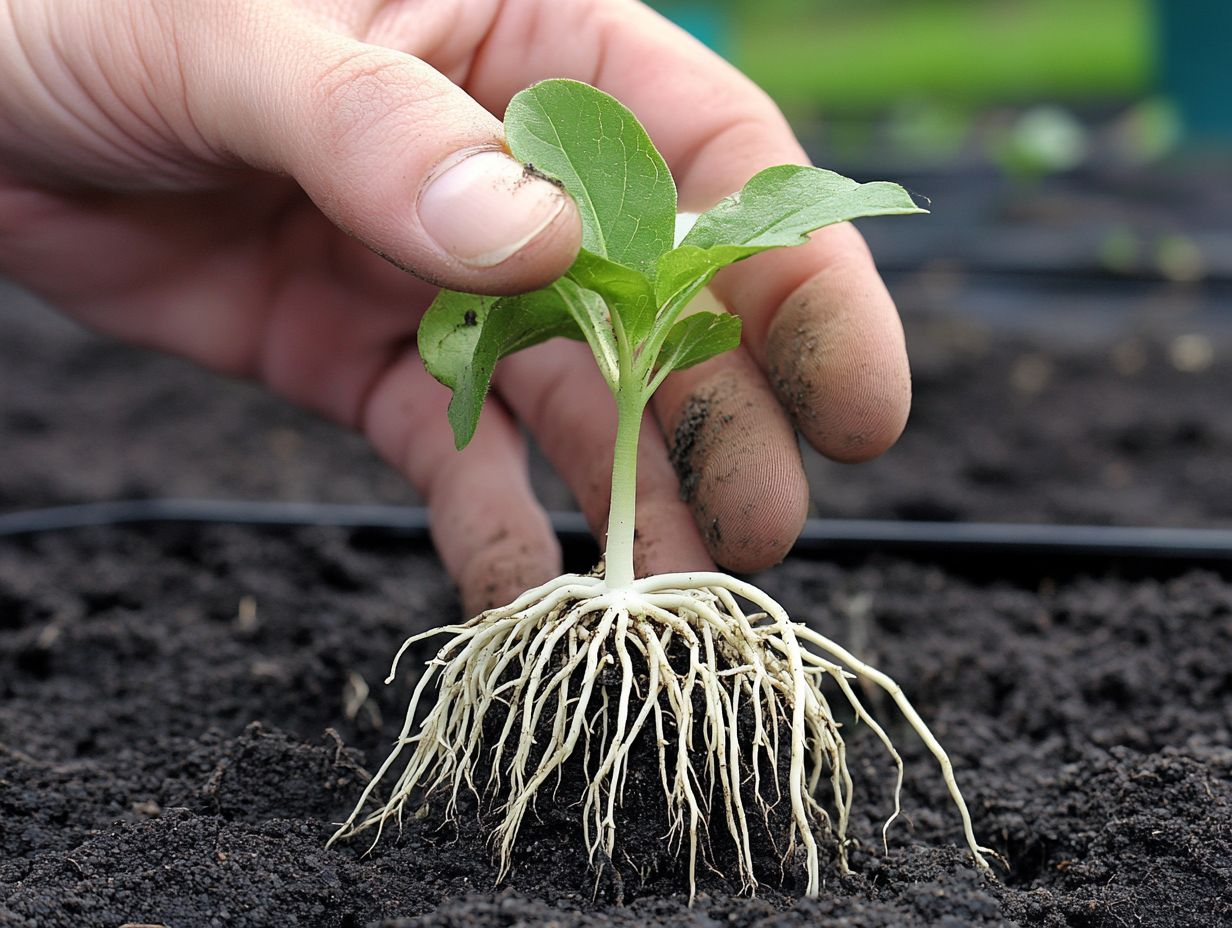
Using effective methods to assess root development can greatly enhance your success with propagated plants, enabling you to monitor their growth without harming the roots.
Techniques like gently lifting the plant from its propagation station or utilizing clear containers can offer valuable insights into root health and progress, particularly for houseplants.
Techniques for Examining Roots
Techniques for examining roots can vary from using clear glass containers for visual inspections to gently uprooting the plant for a closer look at the root system.
These methods allow you to perform a comprehensive assessment of root health, essential for the vitality of your plants. A thorough examination often starts with visual inspections. Look for signs of discoloration or rot that may reveal underlying issues.
Once you ve gently uprooted the plant, check for healthy roots. Seek out firm, whitish roots instead of mushy or darkened ones.
Using clean shears for pruning helps maintain the plant and encourages new root growth, making it a savvy dual approach to propagation.
Understanding these techniques can significantly improve your propagation success.
Factors Affecting Root Development
Numerous factors influence root development in propagated plants, including environmental conditions like light and temperature, as well as care routines such as watering and soil quality.
Grasping these elements is essential for you as a home gardener, enabling you to optimize growth environments and ensure your plants thrive.
Environmental and Cultural Factors
Environmental and cultural factors, such as soil composition, watering frequency, and light exposure, significantly influence root health and development.
Consider the various soil types, from sandy to clay-rich, each affecting water retention and nutrient availability. These factors shape how roots grow and absorb essential elements like potassium sulfate (a nutrient that supports root growth).
Your watering practices are equally critical; over-watering can lead to rot, while under-watering can stress your plants and compromise their root structures.
Light conditions, including both intensity and duration, have a profound impact on root growth. Insufficient light might cause roots to remain shallow, while optimal exposure fosters deeper root systems, enhancing stability and improving access to nutrients.
Striking the right balance among these factors is vital for cultivating robust and healthy plant roots, essential for the success of your propagation efforts.
Promoting Root Development in Propagated Plants
To boost root growth in your propagated plants, dive into these essential practices now! Begin by utilizing a fresh seed-starting mix, as this sets the foundation for healthy roots.
Pay close attention to your watering techniques; the right amount of moisture, determined by your water source, is crucial.
Consider applying fertilizers such as potassium sulfate to stimulate strong root systems.
By following these steps, you ll cultivate thriving plants with a strong foundation.
Best Practices and Tips for Optimal Root Growth
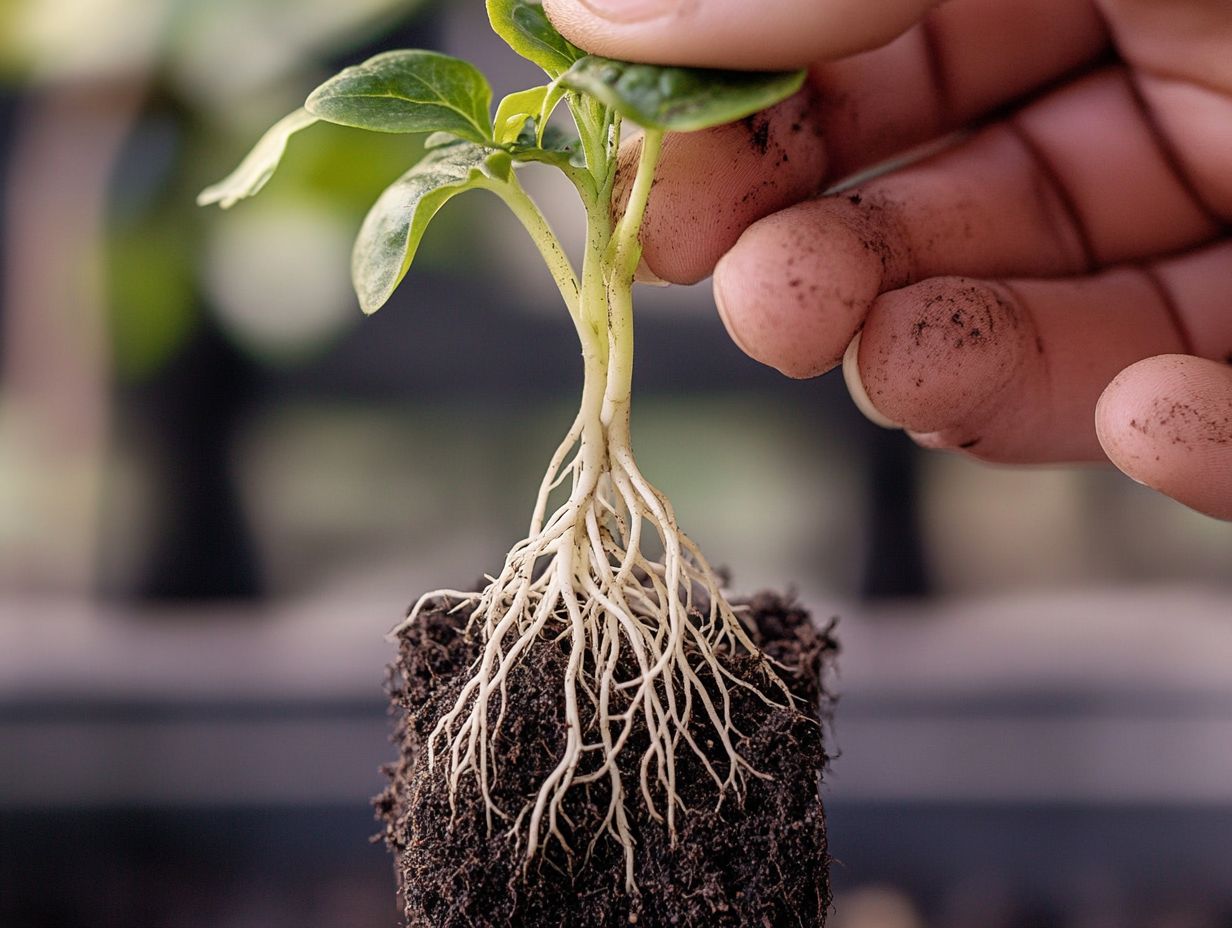
To achieve optimal root growth in your propagated plants, embrace best practices like using a watering can for precise watering and applying root powder to enhance propagation. Ensure the right soil conditions for your potted plants for the best results.
Selecting a soil mix that provides both aeration and moisture retention is crucial. This combination fosters healthy root development, and a mix specifically designed for propagation can strike the perfect balance.
When watering, a watering can with a fine spout helps direct water right at the base of the plant. This minimizes soil disturbance and ensures that moisture efficiently reaches the root zone.
Considering organic growth enhancers, such as compost tea or seaweed extract, can significantly elevate root health. Fertilizers like potassium sulfate can also provide the necessary nutrients.
Common Problems with Root Development in Propagated Plants
As a home gardener, you may encounter challenges with root development in your propagated plants, such as root rot, damping off disease, and invasions from outdoor pathogens. This is particularly true when using tap water that may carry pathogens.
Spotting these issues early allows you to take action and keep your plants thriving.
Identifying and Addressing Issues
Addressing issues like root rot is crucial for maintaining healthy propagated plants and ensuring their successful growth.
Recognizing the early symptoms of these common root problems can elevate your plant care practices. For instance, if you notice yellowing leaves, stunted growth, or a foul odor coming from the soil, act quickly! These signs might mean your plant is struggling with root rot, often caused by overwatering or poor drainage. To learn more about this issue, check out our guide on understanding root health in houseplants.
Damping off often appears as seedlings that are wilted or collapse at the base. To tackle these challenges effectively, assess soil moisture levels and your watering practices, provide adequate airflow, and ensure you re using the right potting mix a blend of materials that nourishes plants in containers or fresh seed-starting mix.
Implementing preventative measures like using sterile tools and clear containers while maintaining sufficient space between seedlings can further enhance root health and promote vigorous growth.
Frequently Asked Questions
What is root development and root growth, and why is it important in propagated plants, including tomatoes, peppers, and cucumbers?
Root development refers to the growth and formation of roots in a plant. Healthy root systems are vital for the growth and survival of propagated plants, including woody plants and softwood cuttings.
How can I check for root development in my propagated plants?

You can check by gently tugging on the plant, inspecting the node for root growth, or removing it from the soil to examine the roots.
Using a root development hormone can speed up the process?
Yes, root development hormones or root powder can encourage and speed up root growth in propagated plants. However, follow the product instructions carefully, as using too much can harm the plant.
How long does it usually take for roots to develop in propagated plants?
The time it takes for roots to develop can vary depending on the plant species, growing conditions, and method of propagation. Generally, it can take anywhere from a few weeks to a few months for roots to develop.
Start implementing these tips today and watch your plants flourish!
What should I do if I don’t see any root development in my propagated plant?
If your propagated plant shows no root growth, it might not be successful.
Try a different method or species and ensure it gets bright light and the right amount of water.
Can I transplant my propagated plant once it has developed roots?
Yes, you can transplant your propagated plant once it has strong roots.
Carefully move it to a bigger container or into the ground. Provide it with proper care, including fertilizer and good water quality.

